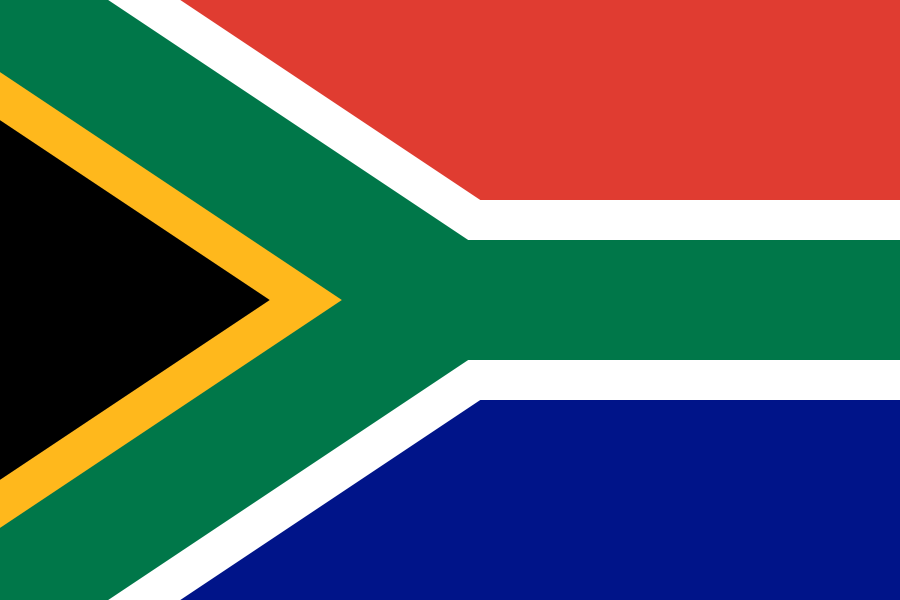The South Africa flag features three primary colors: Green, White, Black, Gold, Red, Blue. The table below showcases the common and popular codes for these colors in HEX, RGB, and CMYK formats, along with Pantone (PMS), RAL, and NCS (Natural Color System) references. Remember, HEX and RGB codes are ideal for digital projects and web design (including HTML and CSS), while CMYK values are tailored for printing purposes.
The flag of South Africa is a vibrant and meaningful symbol representing the country's diverse history, cultural heritage, and aspirations for unity. Here is a detailed description of its design, symbolism, historical context, and overall significance:
Design and Elements
Color Scheme:
- The flag features six colors: black, green, yellow, white, red, and blue.
Layout:
- The flag has a horizontal Y-shape or pall that starts at the hoist side and splits into horizontal stripes toward the fly side.
- The upper horizontal stripe is red, and the lower horizontal stripe is blue.
- The Y-shape divides into green with a white border between the green and the red and blue areas.
- The triangle at the hoist side is black, bordered by a narrow yellow stripe.
Proportions:
- The flag’s width-to-length ratio is typically 2:3.
Symbolism
Black, Green, and Yellow:
- These colors are derived from the flag of the African National Congress (ANC), symbolizing the black population, the land, and the wealth of the country.
Red, White, and Blue:
- These colors come from the Dutch Tricolor and the British flags, representing the European settlers and the legacy of British and Dutch influence.
Green Y-shape:
- The Y-shape symbolizes the convergence of diverse elements within South African society, taking the road ahead in unity.
Combination of Colors:
- Together, these colors represent the unity and diversity of South Africa’s population, blending elements from its colonial and indigenous heritage.
Historical Context
Adoption:
- The current flag was officially adopted on April 27, 1994, coinciding with the first democratic elections in South Africa, marking the end of apartheid.
Design Origin:
- The flag was designed by Frederick Brownell, the former State Herald of South Africa.
Historical Significance:
- The adoption of the flag marked a new era in South Africa’s history, symbolizing reconciliation and the birth of a democratic nation.
Overall Significance
The flag of South Africa is a powerful emblem of national identity, unity, and the country’s commitment to a future free from racial segregation and discrimination. It represents the hope for a united and prosperous future for all South Africans, regardless of their ethnic or cultural background. The flag is prominently displayed during national holidays, official ceremonies, and international events, symbolizing South Africa’s sovereignty and its place in the global community.
Cultural and National Identity
The flag serves as a unifying symbol for the people of South Africa, reflecting their shared heritage and pride in their nation’s achievements. It is a source of national pride and a reminder of the country’s enduring legacy and its commitment to unity, peace, and development.
Unique Feature
- Multicolored and Inclusive Design:
- The combination of six colors in a distinctive and inclusive design makes the flag unique and easily recognizable, representing the country’s diversity and the convergence of its various cultural and historical influences.
In summary, the flag of South Africa is not only a representation of the nation’s diverse and rich heritage but also a symbol of its unity and aspirations for the future. It embodies the spirit, resilience, and unity of the South African people, celebrating their past while looking forward to continued growth and prosperity.
